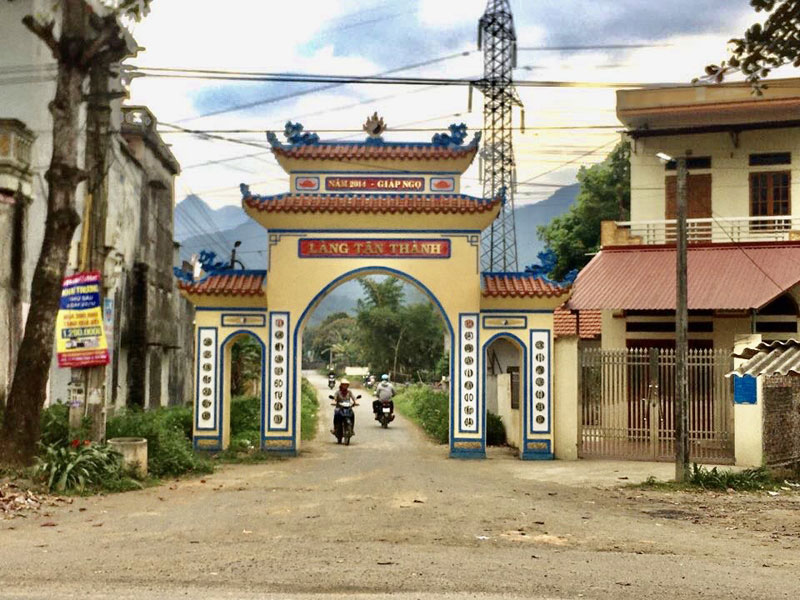
(HBO) - Recently, the movement of building cultural residential areas in Yen Thuy district has been enthusiastically responded by the local people. Every citizen and family are strictly implementing the regulations of the cultural residential areas. The movement of building the cultural residential areas cultural has been developed in both quantity and quality. In 2019, there were 104 out of the 115 cultural residential areas (accounting for 90.43%) meeting the standards of the cultural residential areas.
 Tan Thanh hamlet, Yen Tri commune is the typical cultural residential area of Yen Thuy district with over 10 years of continuous recognition of the title of the cultural residential area.
Tan Thanh hamlet, Yen Tri commune is the typical cultural residential area of Yen Thuy district with over 10 years of continuous recognition of the title of the cultural residential area.
In 2019, with the attention of the Party committees, the appropriate authorities, departments, agencies and organizations from the district to the grassroots level, the movement of building the cultural residential areas has been developing in both quantity and quality, becoming an exciting and widely movement. The review and recognition of the title of the "cultural residential areas” is conducted in accordance with the process and procedures.
In order for the movement of building the cultural residential areas to spread and change the appearance of residential areas, the Steering Committee of the movement of "All People unite to build cultural life” in the district, has been directing the communes and the town to implement the construction of the cultural residential areas in such a way that it must be based on the practical conditions, not erasing the beauties in the people's daily life. They have been propagating so that people can understand and follow, avoiding the situation of chasing after the achievements or not associating with the lives of people. They have also been building the cultural residential areas based on the unique cultural values of the district.
The movement of building the cultural residential areas has contributed to strengthening the unity of the entire people, preserving and promoting the traditional cultural values of the nation, developing economy, accelerating the process of industrialization and modernization of agriculture and rural areas, improving the quality of life for the local people. In 2019, the district's per capita income reached 38.24 million VND. The rate of the poor households fell to 11.25% (down 2.67% compared to that of 2018). The movement of building the cultural residential areas has also contributed to pushing back, eliminating social evils, ensuring the rural security and maintaining the social order and safety.
Through the movement, the local people have had the opportunity to participate in building the models of self-governance and self-reconciliation of the internal conflicts, educating and sensing those who have ever made mistakes. It also helps prevent crime, fight against eradication and social evils, cleaning up the population area, contributing to maintaining discipline, which help people live and work in accordance with laws and community conventions.
The People’s Committee of Lac Son district held a ceremony on April 28 to receive the provincial relic certificate for the ancient rock carving site at Suoi Co stream, located in My Thanh commune.
A special music show titled "The country is in the fullness of joy” has been held at Hoa Binh Square in Hoa Binh city in celebration of the 50th anniversary of the liberation of the South and national reunification (April 30, 1975–2025).
The People's Committee of Lo Son commune, Tan Lac district, has organised the local annual traditional stream fishing festival on April 19 - 20.
As a land deeply intertwined with human history and Vietnam’s millennia-long journey of nation-building and defence, Hoa Binh is often revered for its epic tales and legends.
Residents of Hoa Binh boast a rich cultural identity, reflected in their unique language, traditional attire, customs, and folk melodies – described as "sweet as honey, clear as a mountain stream.”
Lac Son district’s Vu ban town held the 2025 Truong Kha temple festival on April 12–13 (the 15th–16th days of the third lunar month). Since its revival in 2019, the festival has been organised every three years, preserving valuable intangible heritage while meeting the community’s cultural and spiritual needs.



 Tan Thanh hamlet, Yen Tri commune is the typical cultural residential area of Yen Thuy district with over 10 years of continuous recognition of the title of the cultural residential area.
Tan Thanh hamlet, Yen Tri commune is the typical cultural residential area of Yen Thuy district with over 10 years of continuous recognition of the title of the cultural residential area.